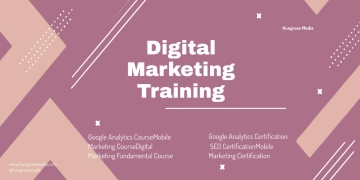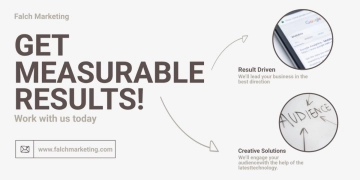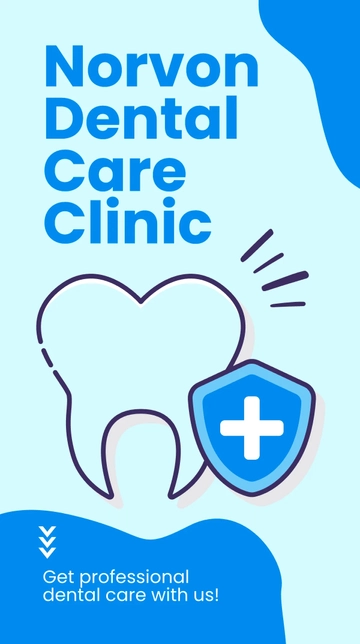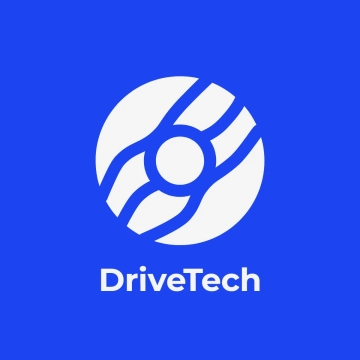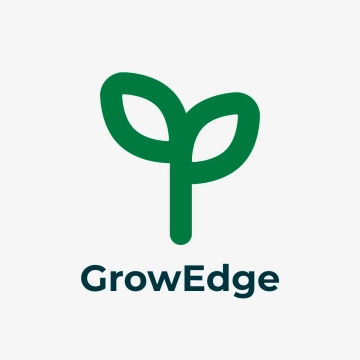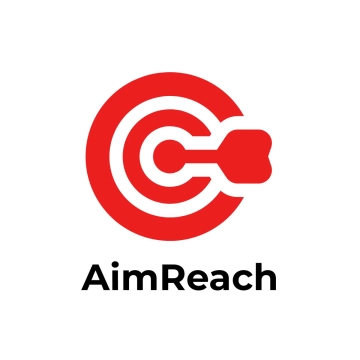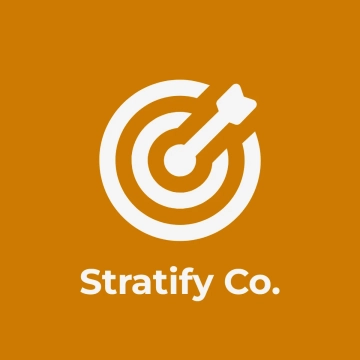Free Digital Marketing SEO Strategy

I. Keyword Research and Analysis
Keyword Research and Analysis is the foundational step in a successful Digital Marketing SEO Strategy at [Your Company Name]. This process involves identifying the words and phrases your target audience uses when searching for products or services similar to what you offer. It ensures that your content aligns with user intent and enhances your website's visibility in search engine results.
Identify Business Objectives: Begin by understanding [Your Company Name]'s goals and target audience. Define what you aim to achieve with your SEO efforts—whether it's increasing brand awareness, generating leads, or driving sales.
Utilize Keyword Research Tools: Use tools like Google Keyword Planner, SEMrush, or Ahrefs to discover relevant keywords. These tools provide insights into search volume, keyword difficulty, and competition, enabling you to select terms with the best potential for driving traffic.
Analyze Competitor Keywords: Study your competitors’ websites to uncover the keywords they rank for. This analysis can offer valuable insights into market trends and reveal opportunities for targeting additional keywords or niches.
Assess Keyword Intent: Understand the intent behind the keywords—whether users are seeking information (informational intent), ready to make a purchase (transactional intent), or looking for specific services (navigational intent). This helps tailor your content to effectively meet user needs.
Prioritize and Implement: Choose a mix of short-tail and long-tail keywords based on their relevance and competition. Long-tail keywords, being more specific, are often less competitive and can lead to higher conversion rates. Incorporate these keywords strategically into your website’s content, including titles, meta descriptions, and headers.
Effective keyword research and analysis lay the groundwork for optimizing your website’s content. With the right approach, [Your Company Name] can enhance search engine rankings and attract more qualified traffic, aligning your site’s visibility with your business goals.
II. On-Page Optimization
On-Page Optimization is a critical aspect of SEO that involves refining elements on your website to improve its search engine rankings and user experience. At [Your Company Name], a strategic approach to on-page optimization ensures that each page is designed to meet both search engine criteria and user needs.
1. Title Tags and Meta Descriptions
Title Tags: These HTML elements define the title of a web page and are displayed on search engine results pages (SERPs). Craft unique, descriptive titles for each page, incorporating primary keywords. Aim for a length of 50-60 characters to ensure full visibility.
Meta Descriptions: These brief summaries appear beneath the title tag on SERPs. Write compelling meta descriptions (150-160 characters) that include target keywords and provide a clear, enticing overview of the page’s content to encourage clicks.
2. Header Tags
Structure: Use header tags (H1, H2, H3, etc.) to organize content and make it more readable. The H1 tag should include the main keyword and describe the page’s primary focus. Subsequent headers (H2, H3) should be used to break down content into sections and sub-sections, incorporating secondary keywords where appropriate.
3. URL Structure
Clean URLs: Ensure URLs are concise, descriptive, and include relevant keywords. Avoid using lengthy or complex URLs with unnecessary parameters. For example, use /services/seo-strategy instead of /services?id=12345. This makes URLs more user-friendly and easier for search engines to crawl.
4. Content Optimization
Quality Content: Create high-quality, relevant content that addresses the needs and interests of your target audience. Incorporate primary and secondary keywords naturally, but avoid keyword stuffing. Focus on providing value, answering questions, and engaging readers.
Multimedia: Optimize images and videos by using descriptive filenames and alt text that includes relevant keywords. This improves accessibility and helps search engines understand the content of multimedia elements.
5. Internal Linking
Strategic Links: Use internal links to connect related content within your site. This helps distribute page authority and enhances user navigation. Ensure that anchor text is descriptive and relevant to the linked page, aiding both users and search engines in understanding the context.
Through meticulous on-page optimization, [Your Company Name] can enhance its website’s relevance and usability, leading to improved search engine rankings and a better user experience.
III. Technical SEO
Technical SEO focuses on optimizing the technical aspects of a website to improve its crawling, indexing, and overall performance in search engines. At [Your Company Name], implementing a robust technical SEO strategy ensures that your site meets the standards set by search engines, enhancing its visibility and user experience.
1. Site Speed Optimization
Page Load Time: Fast-loading pages are crucial for both user experience and search engine rankings. Tools like Google PageSpeed Insights can help identify areas for improvement. Optimize images, leverage browser caching, and minimize JavaScript and CSS files to enhance page speed.
Mobile Optimization: Ensure your site is responsive and performs well on mobile devices. A significant portion of web traffic comes from mobile users, and search engines prioritize mobile-friendly sites.
2. Secure Sockets Layer (SSL)
HTTPS Encryption: Implement SSL certificates to secure your site with HTTPS. This not only protects user data but also signals to search engines that your site is trustworthy. HTTPS is a ranking factor in Google’s algorithm, and secure sites are favored over non-secure ones.
3. XML Sitemap
Sitemap Creation: Generate an XML sitemap that lists all important pages on your site. This helps search engines crawl and index your pages more efficiently. Submit your sitemap to Google Search Console and other search engines to ensure they have the latest version.
4. Robots.txt File
Crawl Control: Use the robots.txt file to guide search engines on which pages to crawl and which to avoid. Ensure that important pages are not accidentally blocked, and regularly review the file to align with any site changes.
5. Canonical Tags
Avoid Duplicate Content: Implement canonical tags to indicate the preferred version of a web page when multiple versions exist. This helps prevent duplicate content issues and consolidates page authority to the preferred URL.
6. Structured Data and Schema Markup
Enhanced Search Listings: Utilize structured data and schema markup to provide search engines with additional information about your content. This can enhance your search listings with rich snippets, such as reviews, ratings, and event details, improving visibility and click-through rates.
7. Fix Crawl Errors
Regular Audits: Use tools like Google Search Console to monitor and address crawl errors. Fixing broken links, redirect chains, and server errors ensures that search engines can access and index your content without issues.
By addressing these technical SEO elements, [Your Company Name] can improve its site’s performance, ensure proper indexing by search engines, and enhance overall user experience, contributing to better search engine rankings and increased organic traffic.
IV. Content Strategy
Content Strategy at [Your Company Name] focuses on creating, distributing, and managing valuable and relevant content to attract and engage your target audience. An effective content strategy enhances your SEO efforts, builds brand authority, and drives user engagement. Here’s how to develop a successful content strategy:
1. Define Content Goals
Objectives: Determine what you want to achieve with your content. Goals may include increasing brand awareness, driving website traffic, generating leads, or boosting customer retention. Align these goals with your overall business objectives for a cohesive strategy.
2. Understand Your Audience
Audience Research: Conduct research to understand your target audience’s needs, preferences, and behaviors. Develop detailed buyer personas to tailor content to their interests and pain points, ensuring relevance and engagement.
3. Content Planning and Calendar
Editorial Calendar: Create a content calendar to plan and schedule content publication. Include key dates, such as product launches or industry events, and plan content around these. This helps maintain consistency and ensures timely delivery of relevant content.
4. Content Creation
Types of Content: Develop a variety of content types, including blog posts, articles, infographics, videos, and social media updates. Ensure that content is high-quality, informative, and engaging. Use target keywords naturally and provide valuable insights to your audience.
5. Content Distribution and Promotion
Channels: Promote your content through various channels, such as your website, social media platforms, and email newsletters. Leverage paid advertising and partnerships to expand reach and drive traffic to your content.
6. Performance Monitoring and Optimization
Analytics: Use tools like Google Analytics to track content performance. Monitor metrics such as page views, time on page, and conversion rates. Use these insights to refine your content strategy and make data-driven decisions.
A well-executed content strategy ensures that [Your Company Name] effectively reaches and engages its target audience, supports SEO efforts, and drives meaningful business results.
V. Link Building and Off-Page SEO
Link Building and Off-Page SEO are essential components of a comprehensive SEO strategy at [Your Company Name]. They focus on improving your website's authority and reputation through external factors, which play a crucial role in search engine rankings. Here’s how to effectively implement link building and off-page SEO:
1. Develop a Link Building Strategy
Quality Over Quantity: Prioritize acquiring high-quality backlinks from reputable and relevant websites. Focus on links from authoritative sources within your industry to enhance your site's credibility.
Diverse Link Sources: Aim to build a diverse backlink profile by obtaining links from various types of sites, such as blogs, news outlets, industry directories, and educational institutions.
2. Content Marketing
Create Shareable Content: Produce high-quality, valuable content that naturally attracts backlinks. This includes in-depth articles, original research, infographics, and industry reports. Content that offers unique insights or data is more likely to be cited by other sites.
Guest Blogging: Write guest posts for reputable blogs and websites in your industry. This allows you to include backlinks to your site within the content, driving traffic and improving your site's authority.
3. Outreach and Relationship Building
Reach Out: Contact influencers, bloggers, and industry leaders to share your content and request backlinks. Personalize your outreach to build genuine relationships and increase the likelihood of securing valuable links.
Engage with Online Communities: Participate in relevant forums, social media groups, and online communities. Share your expertise and link to your content when appropriate, while ensuring that your contributions are valuable and not spammy.
4. Monitor and Manage Backlinks
Track Backlinks: Use tools like Ahrefs or Moz to monitor your backlink profile. Regularly review and assess the quality of your backlinks to ensure they are from trustworthy sources.
Disavow Toxic Links: Identify and disavow any low-quality or spammy backlinks that could negatively impact your site's reputation. This helps maintain a clean and authoritative link profile.
5. Local SEO and Citations
Local Listings: Ensure your business is listed in relevant local directories and citation sites, such as Google My Business, Yelp, and industry-specific directories. Consistent and accurate NAP (Name, Address, Phone Number) information boosts local search visibility.
Implementing a strategic approach to link building and off-page SEO helps [Your Company Name] enhance its domain authority, improve search engine rankings, and drive more referral traffic.
Incorporating a comprehensive Digital Marketing SEO Strategy is vital for [Your Company Name] to enhance online visibility and drive growth. By focusing on keyword research, on-page optimization, technical SEO, content strategy, and link building, your website can achieve higher search engine rankings and attract more qualified traffic. Regular monitoring and optimization ensure ongoing improvements and adaptability to evolving search engine algorithms. A well-rounded SEO strategy not only boosts search performance but also builds brand credibility and delivers valuable user experiences, ultimately supporting your business objectives and fostering long-term success.
- 100% Customizable, free editor
- Access 1 Million+ Templates, photo’s & graphics
- Download or share as a template
- Click and replace photos, graphics, text, backgrounds
- Resize, crop, AI write & more
- Access advanced editor
Improve your search rankings with the Digital Marketing SEO Strategy Template from Template.net. This editable and customizable template helps you plan and execute an effective SEO strategy. Fully editable in our Ai Editor Tool, it offers a professional framework to enhance your website’s visibility and drive organic traffic.










